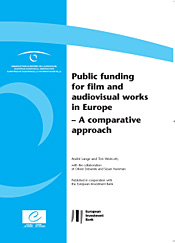The European film and audiovisual sector lays back to a large extend on financing from public sources. The structure of these public funding sources are complex and divers. Most professionals, even specialised in financing, don’t have a real overview over all or even most of the sources. With its report “Public funding for film and audiovisual works in Europe
A comparative approach” the European Audiovisual Observatory draws the exhaustive landscape of public financing available to producers, distributors and exhibitors. The report examines the schemes available on a national and international, but as well on a regional and local level. It examines the political goals behind the public funding (from commercial to cultural motivations), the distribution mode and stage of intervention and sizes available budgets. The report allows as well to compare the 35 examined countries in terms of level and structure of their system of public funding of the audiovisual sector.
Each year, more than €1.2 billion is awarded by public funding bodies to support various activities in film, television and multimedia. These organisations vary hugely in size, scope and remit at international, national and regional level. Although support for production dominates, funding attempts to aid all phases of the production process from development through to exhibition and promotion.
The European Audiovisual Observatory, in association with the European Investment Bank, is publishing its second major study of this area. As well as collecting, comparing and analysing key data on funding, the report sets public funding in context, examining the history, the legal basis and the organisation of the more than 600 programmes we have identified in 35 countries.
In a separate chapter, the European Investment Bank examines the role of private investors in the European film industry.


